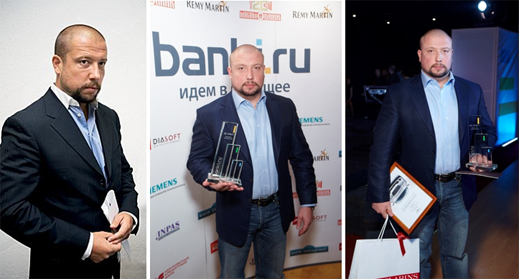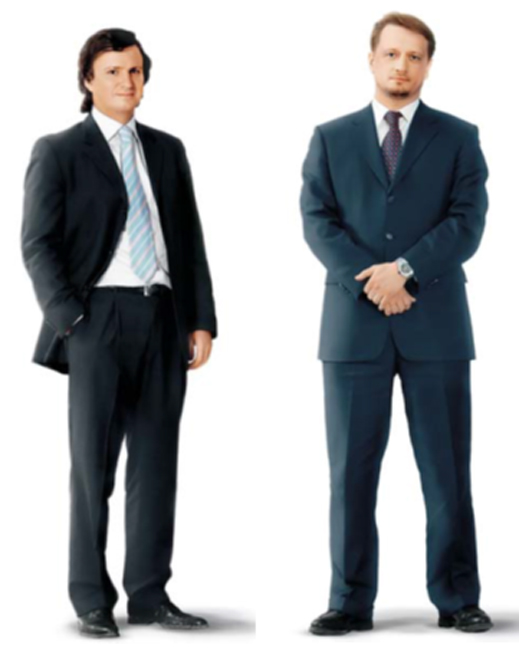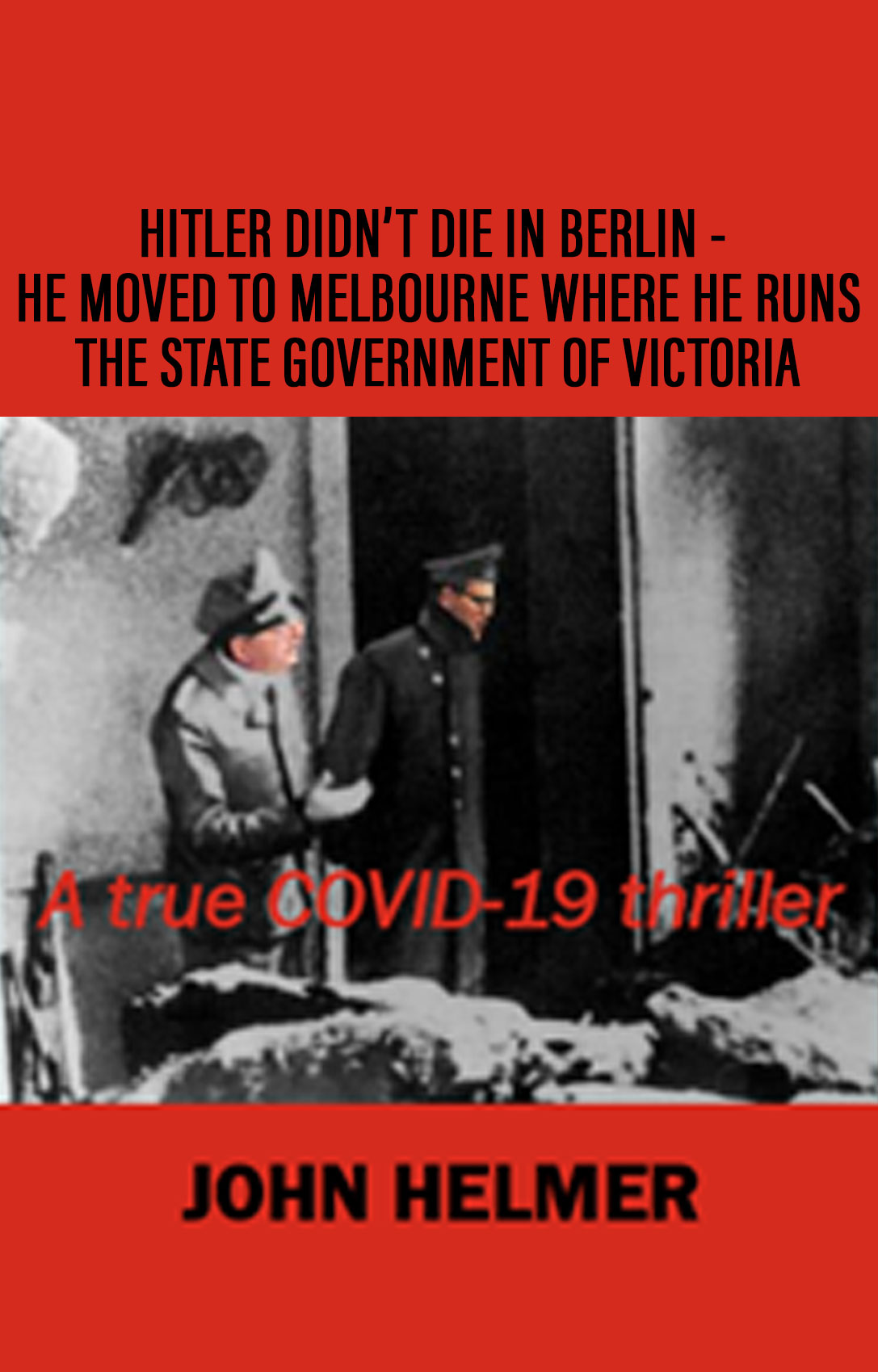
By John Helmer, Moscow
Between buying his bank from Mikhail Khodorkovsky in 2004 and losing it to the Central Bank of Russia at the end of December, 2014, Ilya Yurov, chairman of National Bank (NB) Trust, made a fortune. How much of it he has kept for himself, at the expense of his depositors, shareholders and bondholders, isn’t clear yet. The Central Bank and Moscow prosecutors currently charge that $256 million was stolen from Trust over the past three years through fraudulent loans offshore, the money moved in and out of Cyprus, Switzerland, and Austria, back to Russia, and out again. The amount missing from the bank, according to investigators who have yet to finish the forensic accounting for a much longer period of time, may be turn out to be between $2 billion and $3 billion.
The case of the Trust bust is not only a search for Yurov, the control shareholder of the bank. It is also an investigation of international auditing companies KPMG, Deloitte & Touche, Ernst & Young, and individual auditors of the Trust bank’s books, and signatories of the official annual financial reports, which Yurov authorized and Trust’s management issued. KPMG was the auditor of record in 2010 and 2011. But the firm did not identify the responsible auditor. According to KPMG at the time, “in our opinion, the consolidated statements present fairly, in all material respects, the financial position of the Group as at 31 December 2011 and of its financial performance and its cash flows, finished at the same date, in accordance with international financial reporting standards.”
Deloitte was the official auditor for 2012 and for 2013. Signing for that firm was Ekaterina Ponomarenko. She declared: “In our opinion, the consolidated statements present fairly, in all material respects, the financial position of the Group as at 31 December 2013 and of its financial performance and its cash flows for 2013 in accordance with international financial reporting standards… the Group’s ability to continue its activities on a continuous basis is highly dependent on its ability to keep the current customer base and to ensure the quality of its loan portfolio. Our opinion does not contain any reservations with regard to this issue.”
Ernst & Young then took over, and according to Trust reports, it was the auditor for 2014.
The last auditor to sign his name to the Trust bank’s accounts is Sergei Taskaev, but he didn’t do so until June of this year. He sides with the prosecutors, and sidesteps responsibility for himself: “We established that the frequency and sequence of the reports prepared by the risk management divisions of the Bank during 2014 concerning questions of management credit, percentage, currency, share, strategic, legal, and operational risks, the risk of loss of business reputation, and the risk of loss of liquidity of the Banking group, which is the parent credit organization for the Bank, didn’t correspond to internal documents of the Bank. We established that, according to the approved regulations of the Bank, reports of the internal auditing service on implementation of the plan of checks have to be submitted for consideration and the subsequent reporting to the Board of Directors of the Bank at least two times a year. We established that during 2014 the above report was prepared and respectively considered and approved by Board of directors of Bank only once – in June, 2014.”
According to the press releases from the bank, in 2011 Trust enjoyed a profit of Rb1.9 billion; in 2012, a profit of Rb1.5 billion; in 2013, a profit of Rb2.1 billion. These numbers were issued publicly without accompanying certification by an auditor. According to the bank’s press office, “the bank’s robust profitability indicators were in particular driven by the smooth expansion of the credit portfolio, effective operation with a large base of loyal clients and infrastructure development.” Looking forward to 2014, the bank announced it was planning to “enhance profitability indicators, including by boosting its market cap through the issue of securities and additional shares for a total of Rub 6 bln.”
In the June 2015 report by Taskaev of Ernst & Young, the bottom-line figure for 2013 has been restated as a loss of Rb16.6 billion. The bottom-line loss for 2014 he calculates to have been Rb16.7 billion. Both numbers are estimates, not certified audit results. At the pre-crash rouble exchange rates, these numbers mean that in 2013, and again in 2014, Trust was losing more than $520 million per year. The KPMG reports indicate that in 2010 Trust ran a loss of Rb1.4 billion; and in 2011, a profit of Rb349 million. If that last number is now suspect, it is clear that for every year since at least 2009 Trust has been loss-making.
The implication from Ernst & Young’s report is that when Trust reported it was making profits, in reality it was making losses, and masking them by elaborate offshore schemes. How and why the inspectors of the Central Bank failed to notice the changing of auditor names, and why KPMG and Deloitte failed to report the lossmaking and loan quality problems, when they were widely suspected in the Russian and European markets, are questions the Central Bank is now refusing to answer. KPMG and Deloitte, too.
In statements issued today, the accounting firms avoid the role they have played in Trust’s fraudulent accounts. KPMG said: “we cannot respond to questions due to the policy of auditor independence.” A spokesman for Deloitte said: “According to the company policy, we do not have the right to comment on the work of our current and past customers.” According to Ernst & Young, “in accordance with our corporate policy and signed confidentiality agreements, we do not provide comments on the activities of our clients.”
Investigators say the fraud they have uncovered was so complicated, involving loans to more than one hundred companies, and so apparently profitable, Trust Bank’s balance-sheets and loan-loss records may have looked stable and robust to the Central Bank’s regulators. To KPMG, Deloitte, and Ernst & Young, the investigators now believe the picture cannot have appeared in this light. The collapse of the rouble in the last quarter of 2014, triggered by the drop in the price of crude oil and US capital sanctions which cut off refinancing for the Russian banks, exposed the gap between Trust’s obligations in dollars and its income, cash, and reserves in roubles.
An investigator claims “the rouble crash removed the mask. Before the crash the mask had been accepted by the auditors – and that’s a grave failure on the part of KPMG and Deloitte. Possibly a criminal case.” An international banker says as early as 2012 he believed Trust’s losses had reached the billion-dollar mark.
For the time being, the Russian prosecutors have announced the arrests of five Trust managers — Oleg Dikusar (below, left), a deputy chairman of the bank board; Evgeny Romakov, the bank’s former treasurer (centre); Ekaterina Krivosheeva (right), a senior financial officer; Marat Iskandyrov, the chief internal auditor; and Andrei Popov, the chief accountant. Kriovsheeva is reported to have been detained as a witness rather than as a perpetrator.

No indictment or arrest warrant for Yurov has been presented in court yet, so no formal extradition process has commenced in Switzerland, where Yurov is reported to have a home; or in the UK, where press reports claim he is taking refuge; in Luxembourg, where he is reported to operate bank accounts; or in Australia and Austria, two other flight destinations reported in the Moscow press. Other shareholders and board directors, Nikolai Fetisov (below left) and Sergei Belyaev (right), have not been charged with wrongdoing, yet.

From a civil case filed in the Moscow Arbitrazh Court by depositors in the bank, it appears Yurov had anticipated balance-sheet problems in 2013, and tried raising fresh cash by selling bank shares. However, because arms-length buyers in the Moscow market refused, Yurov was obliged to use recycled bank funds to purchase the shares, and make the capital value on his balance-sheet look much stronger than it was. According to the depositor lawsuit, he also offered depositors the opportunity to double the rate of return on their deposits if they agreed to convert them into credit linked notes (CLNs) or bonds. This scheme had the effect of reducing the value of the secured obligations on the bank’s books, and substituting non-secured debt the bank had no intention of repaying.
Investigators in Moscow say they have learned that up to two hundred companies were created on the orders of Yurov and his accomplices. Some of the companies were Russian; most were registered offshore. They were issued loans from Trust funds, according to documentation prepared by a coordinator, also operating offshore — in Cyprus, according to Moscow investigators who claim to know his name.
These companies then opened accounts at banks in Switzerland, Austria and Cyprus, and conducted thousands of transactions, again coordinated through individuals acting on instruction from Yurov and his associates. These transactions were mainly trades in rouble-denominated Russian securities. For a time, so long as the Russian securities markets moved upwards, these transactions may have been profitable.
“In retrospect, you can see it was a pyramid scheme”, says a Moscow depositor, “based on the stability of the Russian markets, which in turn depended on the price of crude oil.” Investigators now claim that out of much larger profit sums, small fractions were returned to the bank to cover the depositors’ funds which had been taken; to maintain the bank’s loan book to avoid the appearance of non-performing loans or loan losses, or related-party lending risk; and to buy the bank’s bonds and shares to create “phantom capital”. Sources from the investigation estimate that as much as 40% of the outgoing funds may have been returned to the bank’s books in the last year.
Yurov has engaged Egorov Puginsky Afanasiev & Partners (EPAM) to represent him; the firm confirms the lawyer in charge of the case is Elena Pristanskova. She was asked what Yurov is saying in his defence. She declined to reply.
Officially, the Central Bank and the Moscow prosecutors will not answer questions beyond the press releases already issued. These charge fraud of $118 million as well as more than Rb7 billion ($138 million) between 2012 and 2014.
Fitch, the international ratings agency, is refusing to clarify what it had discovered about the bank’s books, which led to a showdown in July of 2010. At the time Trust and KPMG claimed the rating agency’s reported concerns were “unbalanced”, “invalid”, and “caus[ing] significant damage to [Trust’s] market position and reputation.” For the year 2009 Trust claimed to be reporting a modest bottom-line loss of Rb773.1 million (then equivalent to $25.37 million), calculated according to Russian Accounting Standards. Suspecting the loss was much larger, Fitch reportedly told Trust that unless it produced a report audited to International Financial Reporting Standards, it would be downgraded to a level at which the bank would be unlikely to find international lenders. Trust then cancelled its rating agreement with Fitch.
A statement from the bank claims it had offered Fitch an audit report conducted by KPMG which ought to have been acceptable to Fitch, as it had been to KPMG. When Fitch demurred and produced an audit of its own, Trust announced “the agency’s audit, published on July 13, 2010, contained assertions which clearly cast doubt on its validity…in particular, the agency [Fitch] mentioned the lack of transparency surrounding certain separate articles about bank assets, in the assumption that the form of their presentation in the audit does not correspond to existing bank operations… In the latest agency audits related to the bank we observe assertions which are moot from the professional point of view…For instance, several credit deals were qualified as being the source of increased risks.”
The break with Fitch followed by almost two years a break with another international ratings agency, Moody’s. In November 2008, Moody’s issued a warning and a downgrade for Trust, reporting “the significant outflow of deposits that NBT [Trust]… has suffered (accounting for 27% of retail deposits and 50% of corporate deposits since September 2008), forcing it to revert to the Central Bank of Russia as the lender of last resort, which has provided 25% of the bank’s liabilities as of mid-November. In Moody’s view, the significant shrinkage of the bank’s funding base resulting from the deposit outflow has demonstrated the high vulnerability of its funding to adverse macroeconomic events and depositor sentiment. The downgrades reflect the rating agency’s concerns that, although the bank has managed to stabilise the deposit outflow in November, there remains a significant likelihood that a further deterioration in macroeconomic conditions in Russia will weaken the bank’s liquidity profile and franchise to a notable extent.”
“Moody’s also believes that the bank is likely to experience a substantial deterioration in asset quality in both its corporate and retail loan books (which were expanded under relatively aggressive standards) if the operating environment continues its deteriorating trend. The level of impaired retail loans is already significant and increasing as a proportion of the overall loan book.”
That was the end of Yurov’s contract with Moody’s. Fitch was cut next, leaving only RusRating, an independent Moscow-based ratings agency, to continue until very recently. On June 2, 2015, RusRating announced it had “cancelled the credit ratings of Trust National Bank (Moscow) following the expiration of its rating contract. The rating was “BB+” on the international scale and “A-” on the national scale, in both cases with a stable outlook. RusRating thanks the Bank’s management for a fruitful partnership and for its readiness to provide information on request.” This dossier on the Banki.ru website illustrates how impervious to checking Trust’s public claims were. But why the Central Bank, KPMG and Deloitte ignored Fitch’s and Moody’s warnings years before the start of the fraud now being pursued remains unexplained.
A survey of Russian media reporting reveals that Yurov has kept his fortune out of the public eye. A well-informed Moscow banker believes Yurov had a high-level political krysha to protect him with the Central Bank through the crisis of 2008. The source says he doesn’t know who, and he won’t hazard a guess.
Married with six children, Yurov’s only taste for spending money has been reported to be antique books. In 2006 he gave a lengthy interview to a Moscow newspaper in which he described his initial career choice between becoming a professional boxer or a banker. By 2006, two years after he says he had bought out Khodorkovsky, erasing the association with Yukos and the Menatep group, Yurov claimed that on his bottom-line “by international standards the net profit was slightly more than $32 million.”
Asked if he had other assets beside Trust, Yurov said: “My major investments [are] the children and the family. I give them all their spiritual experiences and emotions. At the bank I spend so much of my time and physical strength that, frankly, nothing else is of interest to me.”











Leave a Reply